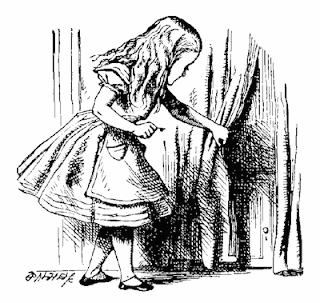Reading Notes Alice in Wonderland Part A
For this week's reading, I focused on Lewis Carroll's story Alice in Wonderland. In these readings, Alice was always very absent minded. For example, she did not think that it was weird for a rabbit to be talking (and for her to understand what he was saying), but she thought it was very strange that the rabbit has a stopwatch and was wearing a coat. Additionally, while falling down the rabbit hole for a VERY long time, Alice was thinking of very strange things. She thought whether cats ate bats and vice versa, plus she thought that she would never again complain of falling down the stairs or if she fell from the roof (apparently these things were likely to happen to her since she had done them before) since that fall was nothing compared to the long fall down the rabbit hole. Overall, Alice seems like the kind of airheaded daydreamer who may be very book-smart due to the random facts she states at times, but she is definitely not an ordinary girl. Some may even call her weird or a little crazy based on the way she acts normally even in the face of all of these abnormal things. If I wrote a story about this, I think I would keep a lot of Alice's personality the same. People would think she was a little different than most people; therefore, when she comes back to the real world and escapes Wonderland, nobody believes her and they all think her entire story was just in her head. Some may even call her crazy and demand she gets locked up for it, but I am not super sure how I would want to end this retelling yet.
Bibliography: Alice's Adventures in Wonderland by Lewis Carroll (1865).



Comments
Post a Comment